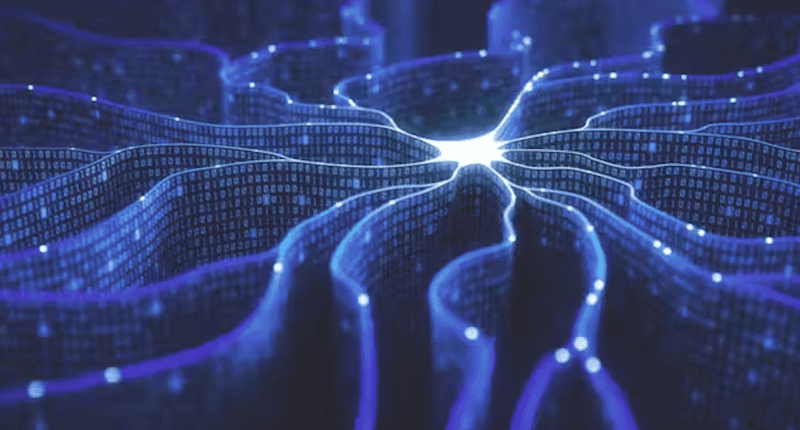Artificial intelligence promised to make education more efficient, personalized, and accessible. But as chatbots, virtual tutors, and generative AI systems proliferate in schools and universities, a darker side of this digital revolution is emerging — one defined by data tracking, behavioral monitoring, and algorithmic profiling.
Across classrooms from California to Copenhagen, AI-driven tools are quietly logging students’ keystrokes, questions, tone, and even emotional patterns, creating a vast data ecosystem that blurs the line between learning assistance and surveillance.
The rise of educational chatbots — from OpenAI’s ChatGPT and Google’s Gemini to specialized platforms like Gradescope, GoGuardian, and Knewton — is sparking debate over how much control schools should have over student data, and whether the pursuit of academic efficiency is worth the erosion of privacy and autonomy.
The Promise: Personalized Learning, Automated Support
When chatbots first entered classrooms, they were heralded as the next frontier in adaptive education. Teachers saw opportunities to use AI for:
- Personalized tutoring, adjusting lessons to each student’s pace and comprehension.
- Administrative relief, automating grading and content feedback.
- Enhanced accessibility, offering instant assistance to students with language barriers or learning disabilities.
From high school English to university-level computer science, students began using chatbots to ask questions, summarize lectures, generate essay outlines, and review complex topics.
For school administrators, AI offered a tantalizing prospect: a 24/7 assistant capable of reducing workloads while providing data-driven insights into student performance.
But beneath these benefits lies an expanding architecture of monitoring — one that often operates without full transparency or informed consent.
The Reality: Every Keystroke Counts
Most educational AI platforms operate on massive data streams. Each time a student interacts with a chatbot, the system collects a wealth of information — not only about what is typed, but how it is typed.
Keystroke patterns, response times, writing styles, error rates, and even emotional cues inferred from word choice can be analyzed and stored. Some systems integrate with learning management platforms that also track attendance, webcam activity, and browser behavior.
For instance, AI proctoring tools like Honorlock and Proctorio use machine vision and microphone input to detect “suspicious behavior” during exams — from eye movement to background noise. These technologies were initially introduced during the pandemic to ensure academic integrity, but many schools have kept them in place permanently.
“We are building an infrastructure of constant monitoring in education,” warns Dr. Emily Merton, a digital ethics researcher at Oxford University. “Students are being trained to accept surveillance as normal — under the guise of personalization.”
From Assistant to Watchdog: The Mission Creep of EdTech AI
What began as a learning tool is evolving into a behavioral management system. Schools increasingly deploy AI chatbots not only for teaching assistance, but also to flag potential misconduct, detect plagiarism, or even identify signs of emotional distress.
Some systems use predictive analytics to forecast which students are at risk of dropping out, underperforming, or violating academic rules. These predictions, though often opaque, can influence how educators treat students — reinforcing biases that the students have no way to contest.
In the U.S., several universities have started integrating AI chatbots into their student affairs and counseling services. These bots can monitor student messages for signs of depression or burnout, automatically alerting school staff. While intended as early-warning tools, critics argue that such monitoring violates confidentiality and autonomy, especially when students are unaware of the extent of data collection.
Data Ownership: Who Controls the Digital Footprint?
The explosion of chatbot use in education raises one pressing question: Who owns the data being generated?
When students interact with AI systems, their inputs — essays, ideas, opinions, and personal reflections — become data points. Most AI providers store this information on proprietary servers and may use it to improve their models.
In many cases, students have no control over how long their data is stored, who can access it, or whether it can be deleted. Contracts between schools and tech providers often include vague clauses allowing “data utilization for performance optimization,” effectively giving companies carte blanche to retain and analyze student information indefinitely.
“We’re seeing a privatization of educational data,” says Ana Rodriguez, policy director at the Digital Privacy Alliance. “Students’ academic and behavioral profiles are being monetized in ways they don’t understand or consent to.”
AI Bias and the Risk of Algorithmic Labeling
Beyond privacy, AI systems in education face another serious problem: bias and misinterpretation. Chatbots trained on vast internet datasets can reproduce social and linguistic biases, potentially leading to unfair evaluations of students based on writing style, cultural background, or even grammar usage.
AI-powered plagiarism detectors, for example, have wrongly flagged non-native English speakers at disproportionately high rates, mistaking linguistic variance for AI-generated text. Similarly, predictive algorithms may rank students from certain demographics as “higher risk” due to correlations that reflect societal inequalities, not individual behavior.
Such algorithmic labeling can influence teacher perception and institutional decisions, compounding existing educational disparities.
The Global Expansion: From the U.S. to the Gulf and Asia
The surveillance dimension of educational AI is not limited to the West. Governments and private institutions across the Middle East, China, and Southeast Asia are rapidly integrating chatbots into public education — often as part of national digital transformation programs.
In the United Arab Emirates, Saudi Arabia, and Singapore, AI learning assistants are embedded in national curricula, collecting massive datasets to tailor teaching models. While these initiatives are often presented as “AI for innovation,” they also create centralized state-controlled education systems capable of monitoring millions of students simultaneously.
China’s education sector, already highly digitized, uses AI tools to track academic performance and emotional engagement through facial recognition and eye-tracking. These systems provide real-time feedback to teachers — and, in some cases, local authorities.
Such implementations raise profound concerns about digital authoritarianism and the normalization of surveillance as pedagogy.
Resistance and Regulation: The Pushback Grows
As awareness spreads, parents, educators, and privacy advocates are pushing back. In the European Union, the General Data Protection Regulation (GDPR) gives students the right to access and erase their personal data, but enforcement remains inconsistent.
Several universities in the U.S. have paused or restricted the use of AI proctoring software after lawsuits and student protests. The Electronic Frontier Foundation (EFF) has warned that “the classroom is becoming a testing ground for mass surveillance.”
Meanwhile, educational institutions are beginning to adopt “AI ethics charters”, outlining transparency, data minimization, and human oversight principles. Yet, these remain voluntary and lack enforcement mechanisms.
“We need binding standards, not self-regulation,” argues Professor David Kim of the University of Toronto. “Otherwise, we risk turning education into a laboratory for algorithmic control.”
The Next Frontier: Chatbots That Judge, Not Just Teach
As large language models (LLMs) evolve, the next generation of educational chatbots will likely feature emotional intelligence, predictive scoring, and behavioral analytics. This means chatbots won’t just assist — they will assess.
Imagine an AI tutor that adjusts not just lessons, but tone and content based on detected mood. Or one that reports a student’s “emotional disengagement” to a counselor after analyzing chat tone. Such systems could enhance learning outcomes — but also blur ethical boundaries between support and surveillance.
Already, companies are testing AI that can detect “empathy levels” and “academic honesty signals” in student conversations. For privacy advocates, this represents the ultimate intrusion — the attempt to quantify the unquantifiable: human behavior and thought.
Conclusion: The Need for a Digital Bill of Rights for Students
Chatbots are undeniably transforming education — making knowledge more accessible and learning more dynamic. But in doing so, they are also reshaping the very notion of student privacy and intellectual freedom.
The same tools that help students learn can also teach them something unintended: that every click, word, and emotion is being watched.
If the 20th century’s educational revolution was about access, the 21st century’s will be about autonomy — who controls the digital spaces where learning takes place.
To safeguard that autonomy, policymakers, educators, and technologists must urgently define a “Digital Bill of Rights for Students” — one that ensures AI remains a partner in learning, not a silent overseer.
Until then, the classroom of the future may look less like a space of freedom — and more like a digital panopticon where every question, and every hesitation, is part of the record.













